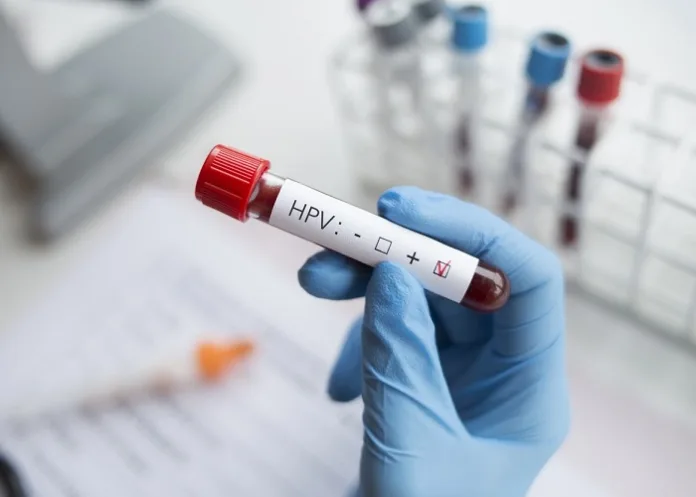One in five men worldwide is infected with a “high risk” potentially cancerous form of HPV, researchers have found, with their analysis, which pooled data from more than 44 000 men across 65 previous studies, also revealing that one in three men globally is infected with genital HPV.
The study, published in The Lancet Global Health journal, found 21% of men aged 15 and over are infected with at least one of the high-risk, potentially cancerous forms of HPV, or human papillomavirus – a family of more than 200 related viruses.
In response to the findings by the scientists from, among others, the WHO, the US CDC, the Catalan Institute of Oncology–IDIBELL in Barcelona, and the Belgian Cancer Centre, the WHO said more must be done to include men in global strategies to both reduce the risk for men and curb the spread of infection.
While most HPV cases are asymptomatic and resolve on their own, the virus can cause certain types of cancer, most commonly cervical – which kills around 340 000 women every year, reports The Telegraph.
But it is also linked to cancers of the genital areas and head, neck, throat and mouth, some of which affect men more than women and are becoming more common.
In 2018, the International Agency for Research on Cancer estimated HPV was linked to more than 69 000 cancer cases in men.
While HPV’s prevalence is fairly well-documented in women, estimates on its spread in men have been limited – until now.
The scientists found that Infection rates overall were high among men aged 15-19 – suggesting they are being infected soon after their first sexual activity – but peaked among those aged 25-29. Rates remained high until the age of 50.
This trend differs slightly from women, in which HPV rates decline with age, bar a slight spike during the menopause.
‘Important reservoir’
The paper concluded that men are an “important reservoir of HPV genital infection”, and urged health authorities to consider targeting men with vaccinations, which are mainly used in women to prevent infection.
Margaret Harris, a spokeswoman for the WHO, added: “The global study on HPV infection among men confirms how widespread HPV infection is in the sexually active population and affects not only women but also men. It also confirms the importance of introducing HPV vaccination in all countries and vaccines in the young population aged between nine and 14 years of age before the HPV infection takes place.”
The vaccine HPV is highly effective, having cut cervical cancer rates in England by 87% since its nationwide rollout among teenage girls in 2008.
Study details
Global and regional estimates of genital human papillomavirus prevalence among men: a systematic review and meta-analysis
Laia Bruni, Ginesa Albero, Jane Rowley, Laia Alemany, Marc Arbyn, Anna Giuliano, et al.
Published in The Lancet Global Health September 2023 edition
Summary
Background
The epidemiology of human papillomavirus (HPV) in women has been well documented. Less is known about the epidemiology of HPV in men. We aim to provide updated global and regional pooled overall, type-specific, and age-specific prevalence estimates of genital HPV infection in men.
Methods
We conducted a systematic review and meta-analysis to assess the prevalence of genital HPV infection in the general male population. We searched Embase, Ovid MEDLINE, and the Global Index Medicus for studies published between Jan 1, 1995, and June 1, 2022. Inclusion criteria were population-based surveys in men aged 15 years or older or HPV prevalence studies with a sample size of at least 50 men with no HPV-related pathology or known risk factors for HPV infection that collected samples from anogenital sites and used PCR or hybrid capture 2 techniques for HPV DNA detection. Exclusion criteria were studies conducted among populations at increased risk of HPV infection, exclusively conducted among circumcised men, and based on urine or semen samples. We screened identified reports and extracted summary-level data from those that were eligible. Data were extracted by two researchers independently and reviewed by a third, and discrepancies were resolved by consensus. We extracted only data on mucosal α-genus HPVs. Global and regional age-specific prevalences for any HPV, high-risk (HR)-HPV, and individual HPV types were estimated using random-effects models for meta-analysis and grouped by UN Sustainable Development Goals geographical classification.
Findings
We identified 5 685 publications from database searches, of which 65 studies (comprising 44 769 men) were included from 35 countries. The global pooled prevalence was 31% (95% CI 27–35) for any HPV and 21% (18–24) for HR-HPV. HPV-16 was the most prevalent HPV genotype (5%, 95% CI 4–7) followed by HPV-6 (4%, 3–5). HPV prevalence was high in young adults, reaching a maximum between the ages of 25 years and 29 years, and stabilised or slightly decreased thereafter. Pooled prevalence estimates were similar for the UN Sustainable Development Goal geographical regions of Europe and Northern America, Sub-Saharan Africa, Latin America and the Caribbean, and Australia and New Zealand (Oceania). The estimates for Eastern and South-Eastern Asia were half that of the other regions.
Interpretation
Almost one in three men worldwide is infected with at least one genital HPV type and around one in five men are infected with one or more HR-HPV types. Our findings show that HPV prevalence is high in men over the age of 15 years and support that sexually active men, regardless of age, are an important reservoir of HPV genital infection. These estimates emphasise the importance of incorporating men in comprehensive HPV prevention strategies to reduce HPV-related morbidity and mortality in men and ultimately achieve elimination of cervical cancer and other HPV-related diseases.
See more from MedicalBrief archives:
HPV vaccine shows success in gay and bisexual men — HYPER2 study
HPV vaccine significantly lowers infection rates in teen girls — CDC study
US expands HPV vaccine recommendations
An epidemiological insight into HPV status and prognostic gene mutations in head and neck cancer

